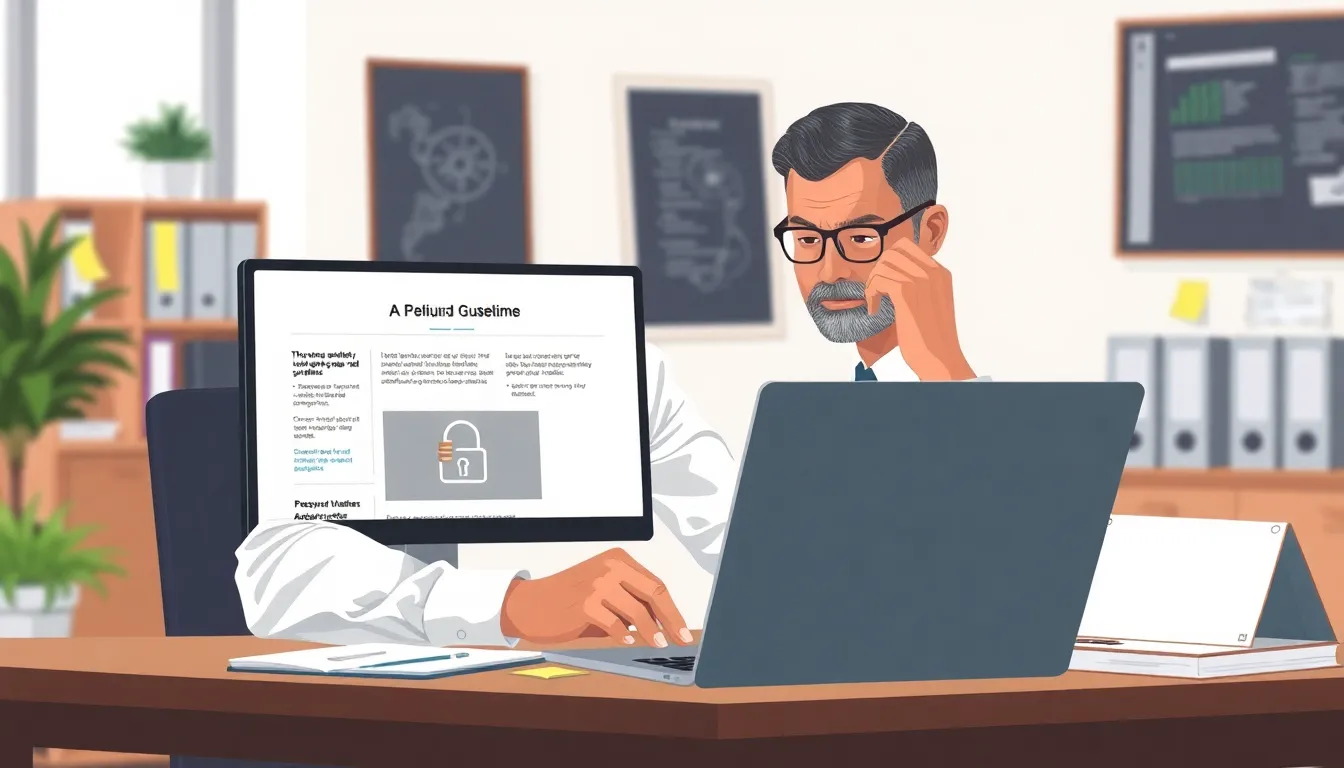In today’s digital jungle, cybersecurity hygiene is the unsung hero of online safety. Just like brushing your teeth keeps cavities at bay, practicing good cybersecurity habits can save you from a world of digital pain. Whether it’s a pesky phishing email or a sneaky malware attack, the threats are lurking, ready to pounce on the unprepared.
Cybersecurity Hygiene
Cybersecurity hygiene refers to a set of practices that individuals and organizations adopt to ensure digital safety. These practices protect systems from threats like phishing and malware.
Definition and Importance
Cybersecurity hygiene encompasses proactive measures taken to safeguard digital assets. Understanding these practices matters for both individuals and businesses. Effective hygiene minimizes risks associated with cyber threats. Employees knowledgeable about security practices are less vulnerable to attacks. Regulations and compliance standards often require adherence to specific hygiene measures.
Key Principles of Cybersecurity Hygiene
Awareness of potential threats serves as a fundamental principle. Identifying malicious emails, suspicious links, and unusual activity can prevent many attacks. Regularly updating software and applications secures systems against vulnerabilities. Utilizing strong and unique passwords contributes to better protection. Implementing multifactor authentication adds an important layer of security. Training staff on recognizing threats fosters a culture of vigilance.
Common Cybersecurity Hygiene Practices

Practicing cybersecurity hygiene involves adopting essential habits to protect digital assets. Implementing the following practices significantly reduces exposure to cyber threats.
Regular Software Updates
Staying up to date with software updates plays a crucial role in cybersecurity. Developers regularly release updates to fix vulnerabilities and enhance security features. Failing to install these updates leaves systems exposed to attacks. Operating systems, applications, and antivirus programs require frequent updates. Users should enable automatic updates wherever possible to streamline this process.
Strong Password Management
Using strong passwords is vital for safeguarding accounts. Passwords should contain a mix of uppercase letters, lowercase letters, numbers, and special characters. Unique passwords for each account help prevent a single breach from compromising multiple accounts. Password managers can store complex passwords securely and simplify access. Regularly changing passwords further strengthens security and addresses potential vulnerabilities.
Multi-Factor Authentication
Enabling multi-factor authentication (MFA) adds an extra layer of protection. This method requires users to provide two or more verification factors before accessing accounts. It can involve text messages, authentication apps, or even biometric scans. MFA significantly reduces the risk of unauthorized access, making it harder for attackers to bypass security measures. Implementing MFA across key accounts enhances digital safety substantially.
Challenges to Maintaining Cybersecurity Hygiene
Maintaining cybersecurity hygiene presents several challenges that individuals and organizations must navigate. These obstacles often stem from human factors and technological barriers.
Human Factor and User Behavior
Human behavior significantly impacts cybersecurity hygiene. Users frequently fall for phishing scams due to a lack of awareness or training. Many people underestimate the importance of strong passwords, opting for convenience instead. Additionally, complacency can set in when regular updates and security measures are not prioritized. Regular cybersecurity training equips employees to identify potential threats and enhances their decision-making. A culture that promotes vigilance aligns with good cybersecurity habits, making it essential to address user behavior for effective security.
Technological Barriers
Technological barriers complicate the pursuit of cybersecurity hygiene. Outdated software frequently contains vulnerabilities that cybercriminals exploit. Many organizations struggle to implement automated updates due to resource constraints or legacy systems. Device diversity also presents a challenge, as not all devices support the same security measures. The complexity of security configurations can lead to inconsistent practices. Additionally, insufficient budget allocation for cybersecurity tools limits the ability to enhance defenses. Addressing these barriers requires a strategic approach to ensure comprehensive cybersecurity hygiene measures are in place.
Benefits of Good Cybersecurity Hygiene
Maintaining good cybersecurity hygiene offers several significant benefits.
Protection Against Threats
Proactive cybersecurity practices effectively shield individuals and organizations from numerous digital threats. Regularly updating software minimizes vulnerabilities. Strong, unique passwords and multifactor authentication provide additional layers of security for accounts. Employees who recognize phishing attempts and other tactics used by cybercriminals help prevent breaches. Organizations that adopt these measures experience a substantial reduction in security incidents. Prevention is far more effective than addressing issues post-breach. A culture of cybersecurity awareness fosters vigilance and strengthens defenses against evolving threats.
Enhanced Trust and Reputation
Good cybersecurity hygiene builds trust between customers and organizations. Secure practices demonstrate a commitment to safeguarding sensitive information. Organizations that prioritize cybersecurity hygiene often achieve higher customer satisfaction. Positive reputation stems from a transparent approach to cybersecurity. Additionally, compliance with regulations enhances credibility, as stakeholders recognize adherence to industry standards. Protecting against breaches not only avoids financial loss but also promotes lasting relationships with clients. As trust grows, so too does customer loyalty, ultimately supporting long-term business success.
Conclusion
Prioritizing cybersecurity hygiene is essential for everyone navigating the digital landscape. By adopting proactive measures and fostering a culture of awareness, individuals and organizations can significantly reduce their vulnerability to cyber threats. Regular updates strong password practices and multifactor authentication are key components that enhance overall security.
While challenges exist in maintaining these practices it’s crucial to address them through strategic planning and ongoing education. Ultimately good cybersecurity hygiene not only protects sensitive information but also builds trust and credibility with customers. Embracing these habits ensures a safer online experience for all.

